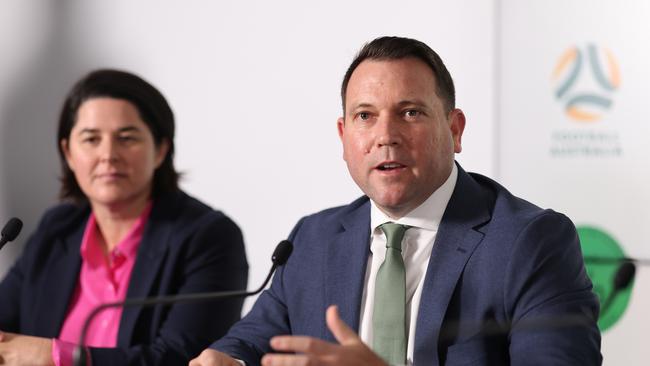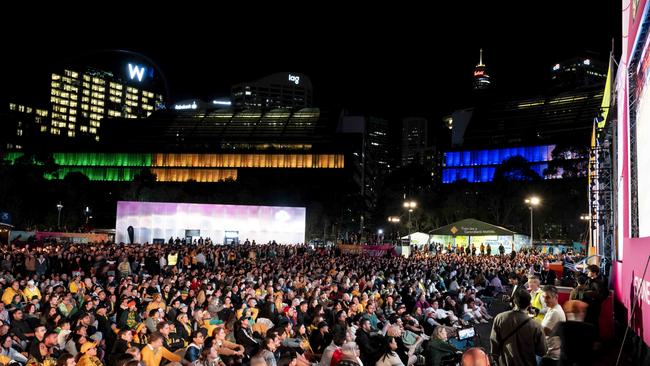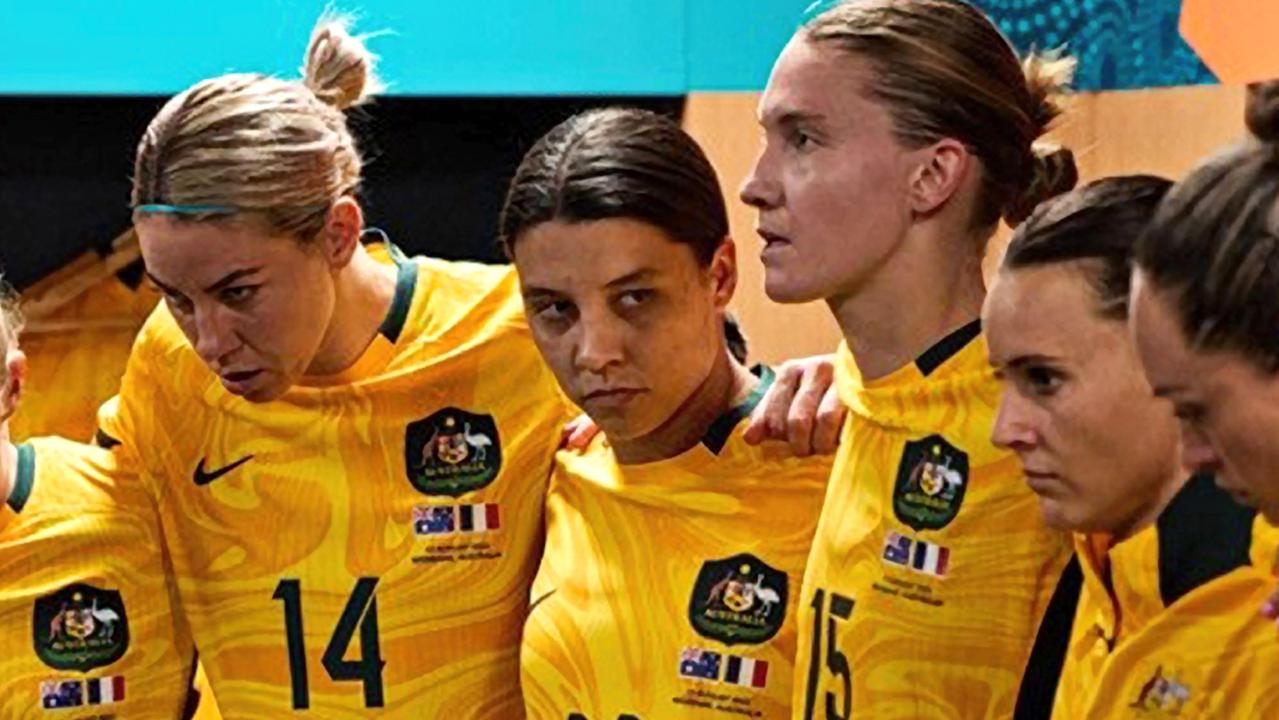Women’s World Cup 2023: How Australia must capitalise on $1.32 billion success of home tournament
The FIFA Women’s World Cup set a new benchmark for sport in Australia but Football Australia CEO James Johnson said it’s just the beginning.

Women's Football
Don't miss out on the headlines from Women's Football. Followed categories will be added to My News.
The FIFA Women’s World Cup set a benchmark for female sport in this country but Football Australia CEO James Johnson says its post-tournament report highlights the need for continued investment.
The World Cup had a huge impact and the economic benefit to Australia has been tallied at $1.32 billion.
It was groundbreaking tournament for the Matildas. Sales of their jersey were up 19 per cent on the 2019 edition, viewership numbers broke records and every match they played was a sellout.
However, building the Matildas’ profile wasn’t Football Australia’s only mission during the World Cup.
Johnson wanted to create a legacy similar to the one achieved by the Sydney 2000 Olympics.

The report, due to be released on Friday, reveals just how big an impact the tournament had and the A-League women’s competition is a great example of the ongoing effect.
Club memberships increased by 669 per cent in 2023 from the previous year.
More than 27,000 children registered for Liberty A-League passes, well up on the 8800 from 2022.
More fans than ever before are watching the games. The average attendance is 2500, up from 1240 from last year, and streaming of the matches has reportedly increased by 120 per cent.
At a grassroots level, participation has soared, particularly in schools, while the participation of women and girls has increased from 21 per cent in 2021 to 26 per cent.

Despite the huge success, Johnson said the job was far from done.
“To continue this trajectory we aim to secure the hosting rights for the AFC Women’s Asian Cup 2026, which will require government support at all levels,” he said.
“We believe that this will once again be a huge value generator for Australia and another boost to the ongoing growth of Australian football, and more broadly throughout Asia and the Oceania region.
“These successes have seen a dramatic increase in women’s participation in football, which is adding more pressure on the need for government investment at all levels to closing the $2.9 billion gap in facility investment across Australia.

“With over 2400 clubs at capacity, we continue to work with all levels of government to meet the needs of 1.7 million participants across Australia.”
Football Australia head of women’s football, World Cup legacy and inclusion, Sarah Walsh, said the Matildas had shown change was possible.
“The Matildas have been at the forefront of transformative societal change, challenging perceptions and gender stereotypes while advocating for sustained evolution within the Australian and international sporting landscape,” Walsh said.
“The Legacy ’23 post-tournament report delves into the success achieved in leveraging the tournament.

“However, it emphasises the need for increased funding to ensure that the legacy of the FIFA Women’s World Cup isn’t merely a momentary triumph but evolves into foundations for a thriving, equitable and dynamic future for football.”
In the same way the Olympics benefited multiple sports, the Women’s World Cup legacy is not limited to football.
Federal and state governments invested $398 million into the Legacy ’23 program and related initiatives.
A total of $269 million was channelled into advancing football but 33 per cent of the funds have benefited other sports.

Millions were spent upgrading the stadiums used during the tournament, including their change rooms, lighting, a sensory room at Suncorp Stadium, improved media facilities, bigger screens, player recovery areas, new turnstiles and pitch upgrades.
These improvements will have huge benefits for the National Rugby League and rugby union.
Major upgrades were also completed at community clubs used by international teams to train during the World Cup. They are a huge benefit to grassroots clubs and players.
The huge rise in participation means many community clubs are now bursting at the seams.
Johnson said the success of the tournament and the legacy proved more investment was needed.
“As we aim to host the AFC Women’s Asian Cup 2026 and bid for the 2020 FIFA World Club Cup to contribute to the growth of Asian football, we are committed to ensuring that the legacy of the FIFA Women’s World Cup continues to thrive, benefiting not just football but the wider Australian society,” he said.
More Coverage
Originally published as Women’s World Cup 2023: How Australia must capitalise on $1.32 billion success of home tournament





